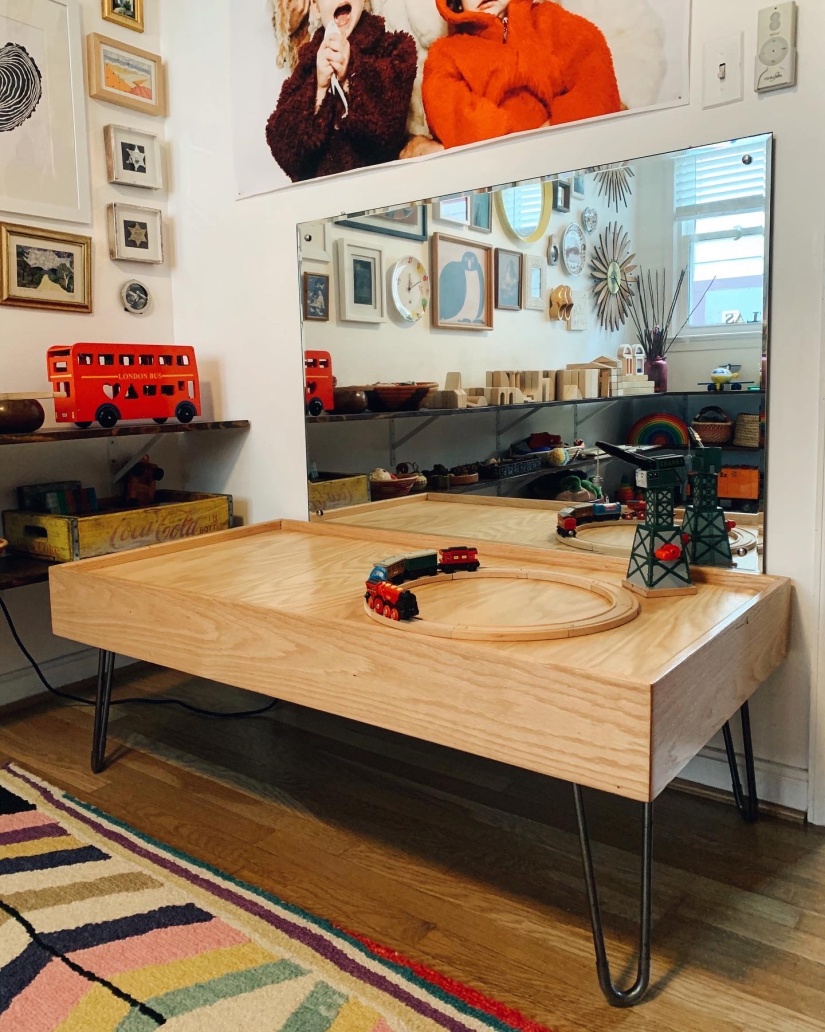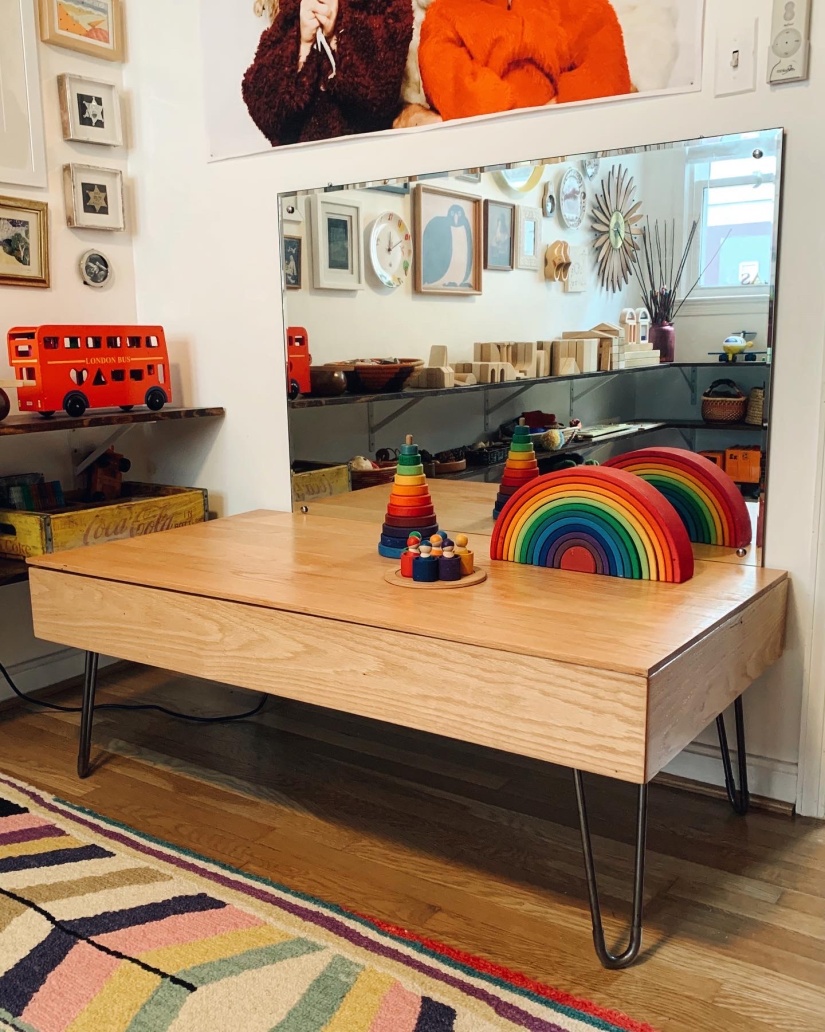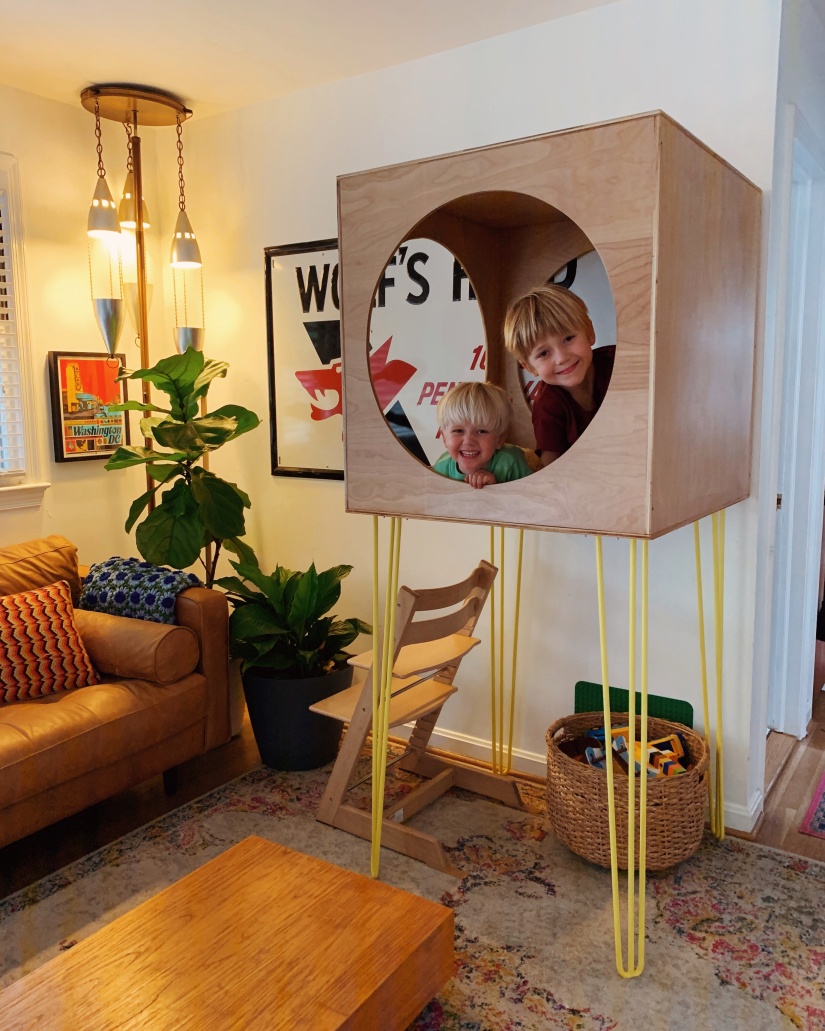


I am forever getting these big ideas, so it’s rather lucky that I am married to someone who is willing to make them a reality. Case in point, when our oldest was a baby I decided he had to have a light table, that also doubled as a train/play table, and that we could also use as a coffee table. It needed to be beautiful and affordable to make too. Easy right?
With lots of planning, some tool lending from friends, and lots of tweaking to get the lights just right, my darling wonderful husband built me this! Four years and another baby later, it still gets used daily. The light table element is definitely the most popular layer, but it is used in all its iterations. Don’t you kind of need one now too? 🙂




